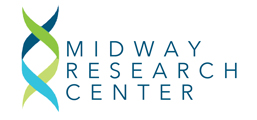Food and Drug Administration (FDA) categories for describing the clinical trial of a drug based on the study’s characteristics, such as the objective and number of participants.
Phase 1
Studies that are usually conducted with healthy volunteers and that emphasize safety. The goal is to find out what the drug’s most frequent and serious adverse events are and, often, how the drug is metabolized and excreted.
Phase 2
Studies that gather preliminary data on effectiveness (whether the drug works in people who have a certain disease or condition). For example, participants receiving the drug may be compared with similar participants receiving a different treatment, usually an inactive substance (called a placebo) or a different drug. Safety continues to be evaluated, and short-term adverse events are studied.
Phase 3
Studies that gather more information about safety and effectiveness by studying different populations and different dosages and by using the drug in combination with other drugs.
Phase 4
Studies occurring after FDA has approved a drug for marketing. These including postmarket requirement and commitment studies that are required of or agreed to by the sponsor. These studies gather additional information about a drug’s safety, efficacy, or optimal use.

